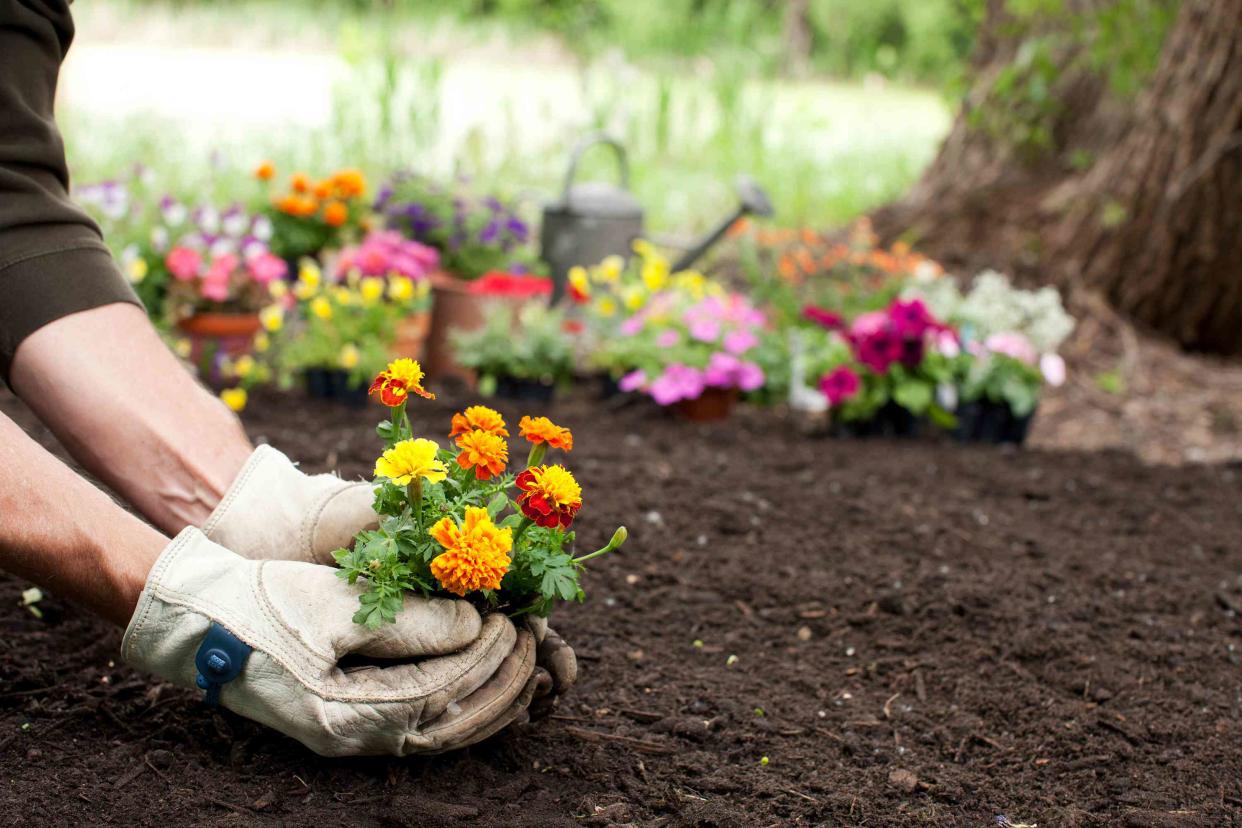7 Plants That Improve Soil Quality, According to Gardening Experts
Get your grow on with these soil-enriching botanicals.

Liliboas/Getty Images
While there are many ways to make your garden bloom, a great start is to improve soil quality. One of the easiest ways to do this, especially for less experienced gardeners, is with plants that naturally enhance soil quality.
“Improving soil would entail altering its structure to enhance fertility. While you can amend the soil with compost and fertilizers, you can also gradually improve soil quality over time by selecting the right plants for your gardens,” explains NYBG-certified horticulturist Bliss Bendall.
Is soil quality an issue in your garden? Here are seven plants to consider for an easy fix.
Meet Our Expert
Bliss Bendall, NYBG-certified horticulturist
Kaylyn Hewitt, lead floral designer for The Bouqs
Related: The 2 Best Ways to Test Your Soil pH, According to a Garden Pro
Sunflowers
Looking to beautify your garden and improve soil quality at the same time? Sunflowers are exactly what the plant doctor ordered according to Bendall.
She says, “They have a very extensive root structure that helps them stand so tall and erect. So, their deep and hardy roots reach far down into the soil, effectively creating channels for water, air, and nutrients needed to build up good soil health over time.”
Kaylyn Hewitt, lead floral designer for The Bouqs, is also a proponent of sunflowers. “These plants help to remove harmful metals in the soil that prevent everything from flourishing," she adds.
Marigolds
If you like sunflowers, there’s a pretty good chance you’ll like marigolds. These flowers are also a favorite of Hewitt’s. She says, “Another favorite, especially for the later months, are marigolds. Marigolds also have a root system that benefits the soil by keeping pests at bay.”
Alfalfa
Attention salad lovers, we have some good news for you. If you grow alfalfa, not only will your salads be more delicious and nutritious, but the quality of your soil will also be elevated. “Alfalfa plant’s deep taproots help to aerate the soil and provide better drainage by changing the soil structure,” says Bendall.
She continues, “The crop can be used as a cover crop, fixing nitrogen into the ground and acting as a living mulch for intercropping. Because it grows so densely, it prevents soil erosion and encourages carbon sequestration through photosynthesis.”
Related: How Much Mulch Do You Need for Your Garden?
Peas
Do you like peas or other legumes? Now, you have several reasons to plant them. “Peas and other legumes are known as nitrogen-fixing plants. They can significantly boost this vital nutrient in soil over time. Nitrogen is so vital because it is a major component of chlorophyll, the compound by which plants use sunlight energy to produce sugars from water and carbon dioxide,” says Bendall.
She adds that nitrogen is a major component of amino acids, which are the building blocks of proteins. Without proteins, plants will wither away and die. She explains, “Some proteins act as structural units in plant cells while others act as enzymes, making possible many of the biochemical reactions on which life is based. Having a plant that produces this nitrogen in abundance is great for soil fertility and very healthy plants.”
Clover
Looking for an alternative to a seeded grass lawn? Why not plant clover? “Its flowers attract both pollinators and beneficial bugs that can help control pest populations, which also have an effect on soil quality,” explains Bendall.
Milk Thistle
Milk thistle has soil-building qualities that can help your garden grow and stay healthy, according to Bendall. “The plant is very potassium-rich and its strong and deeply penetrating roots help break up subsoil and bring iron closer to the surface which improves soil structure.”
Lupine
Hewitt is a major fan of lupine for a variety of reasons and not just because it improves soil. She says, “They are so colorful and easy to grow. Lupines have a root system that benefits the soil and the surrounding plants by balancing or fixing the nitrogen in the soil. I grew this flower for many seasons on my patio in Los Angeles and it brought so much joy to the space. ”
Related: 12 Plants You Should Never Grow Next to Each Other
For more Real Simple news, make sure to sign up for our newsletter!
Read the original article on Real Simple.
